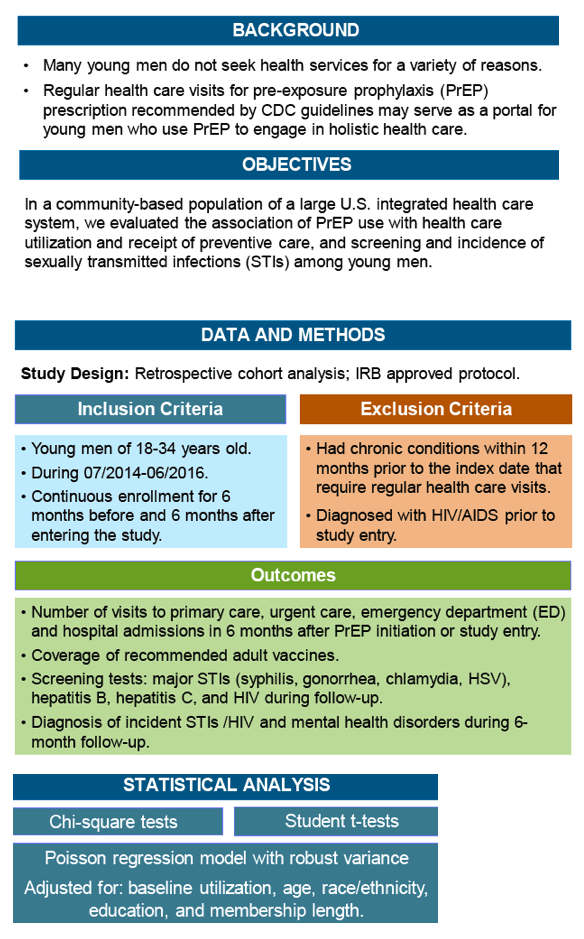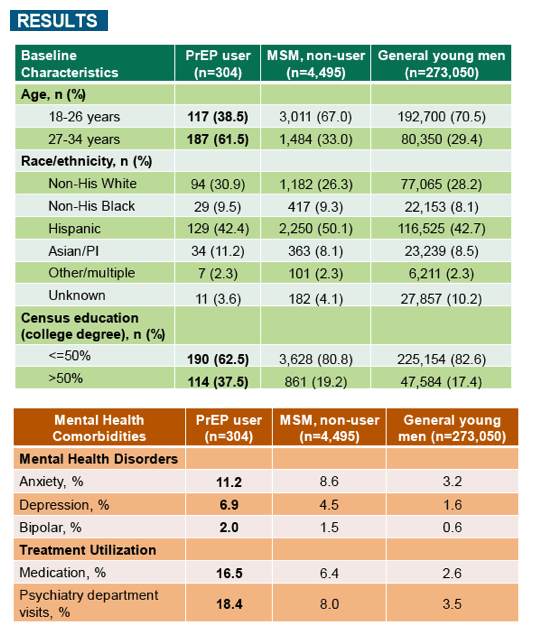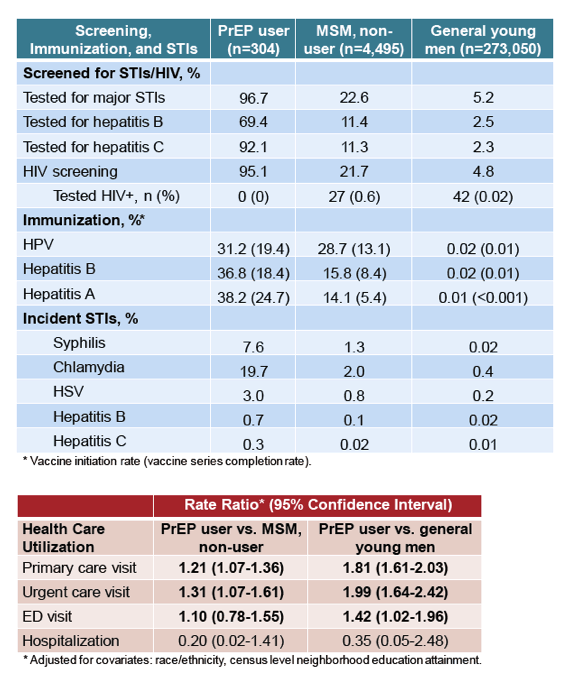 |
 |
 |
| |
Healthcare Utilization and STI Incidence in Young Men on Pre-exposure Prophylaxis (PrEP) Compared to Young Men Who Are Not on PrEP: The PrEPARE Study
|
| |
| |

Reported by Jules Levin
22nd International AIDS Conference (AIDS 2018), Amsterdam, Netherlands, 23-27 July 2018
Rulin C. Hechter, PhD, MS, MD1; Lie-Hong Chen, DrPH1; Kalvin Yu, MD2
1. Research and Evaluation, Kaiser Permanente Southern California; 2. Infectious Diseases Department, Southern California Permanente Medical Group

Program Abstract
Background: Many young adult males do not seek healthcare services for a variety of reasons. Regular healthcare visits for pre-exposure prophylaxis (PrEP) prescription required by CDC guidelines may serve as a portal for young male PrEP users to engage in holistic healthcare. In a large, diverse, community-based population, we evaluated the association of PrEP use with healthcare utilization, and incidence of sexually transmitted infections (STIs) among young men.
Methods: Within a large U.S. integrated healthcare delivery system in Southern California, we identified eligible young males (18-34 years) during 07/2014-06/2016. We ascertained demographic characteristics, PrEP use, healthcare utilization, immunization, and STI diagnosis through electronic health records. We evaluated the independent association of PrEP use with healthcare utilization during 6 months following PrEP initiation or study entry, using Poisson regression models with robust variance to sequentially adjust for: baseline utilization, age, race/ethnicity, education, and membership length.
Results: We identified 304 PrEP users, 4,495 men who have sex with men (MSM) without PrEP use and 273,050 other young men. Compared to the two comparison groups, PrEP users were older (27-34 vs.18-26 years), had more primary and urgent care visits, more visits with psychiatry and other specialty care providers (P< 0.001), slightly more ED visits and similar rate of hospitalization. More PrEP users had a diagnosis of mental health disorder (Figure). The coverage of 3 doses of HPV and hepatitis B vaccines was low among all groups, with higher rates among PrEP users (HPV:19%, hepatitis B:18%). Majority of PrEP users received tests for syphilis/ gonorrhea/ chlamydia (97%), hepatitis B (70%), hepatitis C (92%) and HIV (95%) during follow-up, while the testing rates were lower in the comparison groups (MSM:11-23%, other: < 5%). The incidence of syphilis, gonorrhea and chlamydia was 7.6%, 19.7%, and 3.0% among the PrEP users, significantly higher than the comparison groups (P< .001). In multivariable analyses, PrEP use was associated with greater use of primary care, urgent care and ED visit (Table).
Conclusions: Young male PrEP users are more likely to utilize primary and preventive care and undergo STI screening, but have a higher rate of STIs and mental health disorders compared to their counterparts.



|
| |
|
 |
 |
|
|